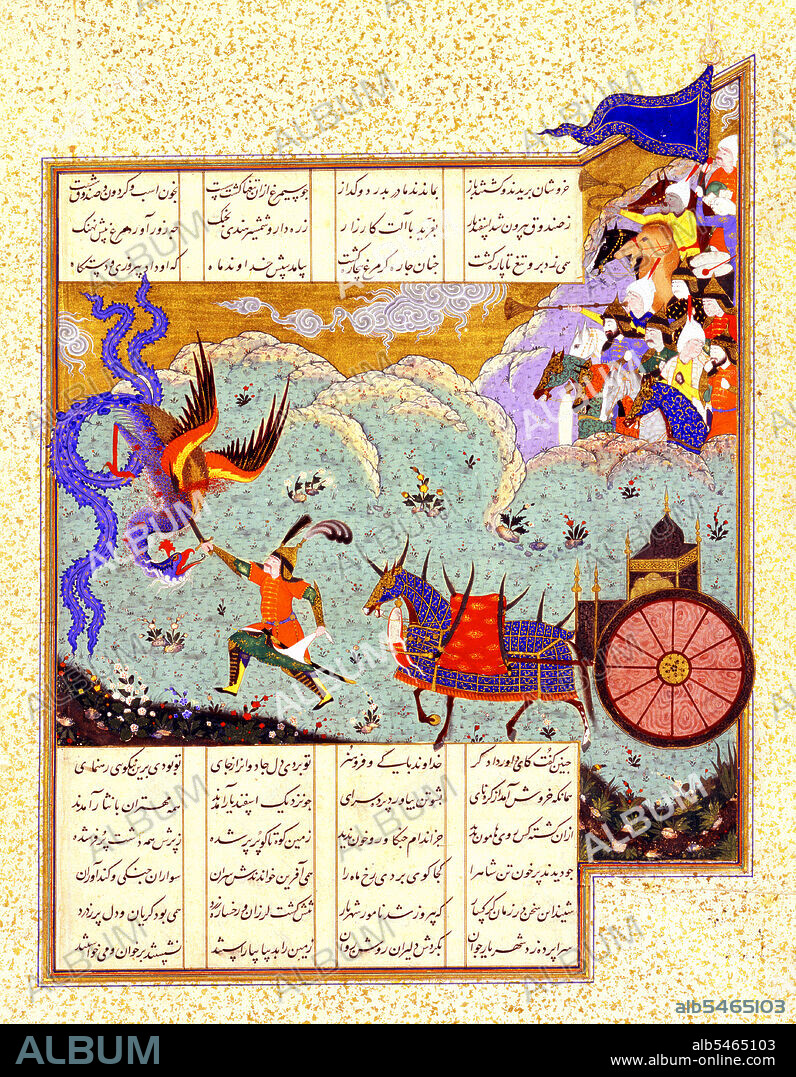alb5465103
Isfandiyar slays a Phoenix or Simurgh. From the Shahnameh (Book of Kings) of Shah Tahmasp, ca. 1525-30.

|
Zu einem anderen Lightbox hinzufügen |
|
Zu einem anderen Lightbox hinzufügen |



Haben Sie bereits ein Konto? Anmelden
Sie haben kein Konto? Registrieren
Dieses Bild kaufen

Titel:
Isfandiyar slays a Phoenix or Simurgh. From the Shahnameh (Book of Kings) of Shah Tahmasp, ca. 1525-30.
Untertitel:
Siehe automatische Übersetzung
Isfandiyar, son of Gushtasp (the 5th Kayanian King) Battles Simurgh, the Fantastic Bird. From the Shah-nama (Book of Kings) the Epic of Medieval Persia by Firdawsi, a 10th century poet. Shiraz, 1330. The Shahnameh or Shah-nama is an enormous poetic opus written by the Persian poet Ferdowsi around 1000 AD and is the national epic of the cultural sphere of Greater Persia. Consisting of some 60,000 verses, the Shahnameh tells the mythical and historical past of (Greater) Iran from the creation of the world until the Islamic conquest of Persia in the 7th century. The work is of central importance in Persian culture, regarded as a literary masterpiece, and definitive of ethno-national cultural identity of Iran. It is also important to the contemporary adherents of Zoroastrianism, in that it traces the historical links between the beginnings of the religion with the death of the last Zoroastrian ruler of Persia during the Muslim conquest.
Bildnachweis:
Album / Pictures From History/Universal Images Group
Freigaben (Releases):
Model: Nein - Eigentum: Nein
Rechtefragen?
Rechtefragen?
Bildgröße:
3700 x 4762 px | 50.4 MB
Druckgröße:
31.3 x 40.3 cm | 12.3 x 15.9 in (300 dpi)
Schlüsselwörter:
ASIEN • ASIEN, KONTINENT • GEMAELDE • GESCHICHTE • IRAN • KONTINENT, ASIEN • KUNST • MALEREI • MYTHEN: PERSISCH • MYTHOL. TIER: PHOENIX • MYTHOLOGIE • PERSISCH • PERSISCHE MYTHEN • PERSISCHE • PHOENIX (VOGEL) • PHOENIX • PHÖNIX (VOGEL) • RELIGION • ZEITGESCHICHTE
 Pinterest
Pinterest Twitter
Twitter Facebook
Facebook Link kopieren
Link kopieren Email
Email
